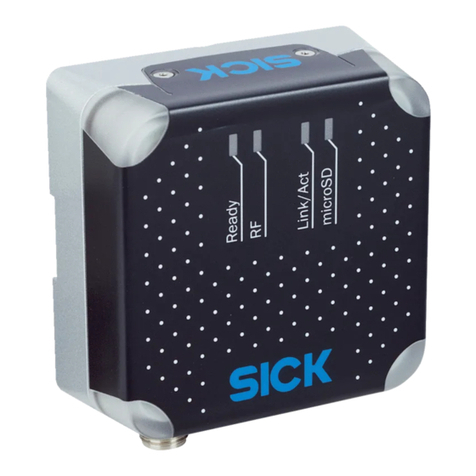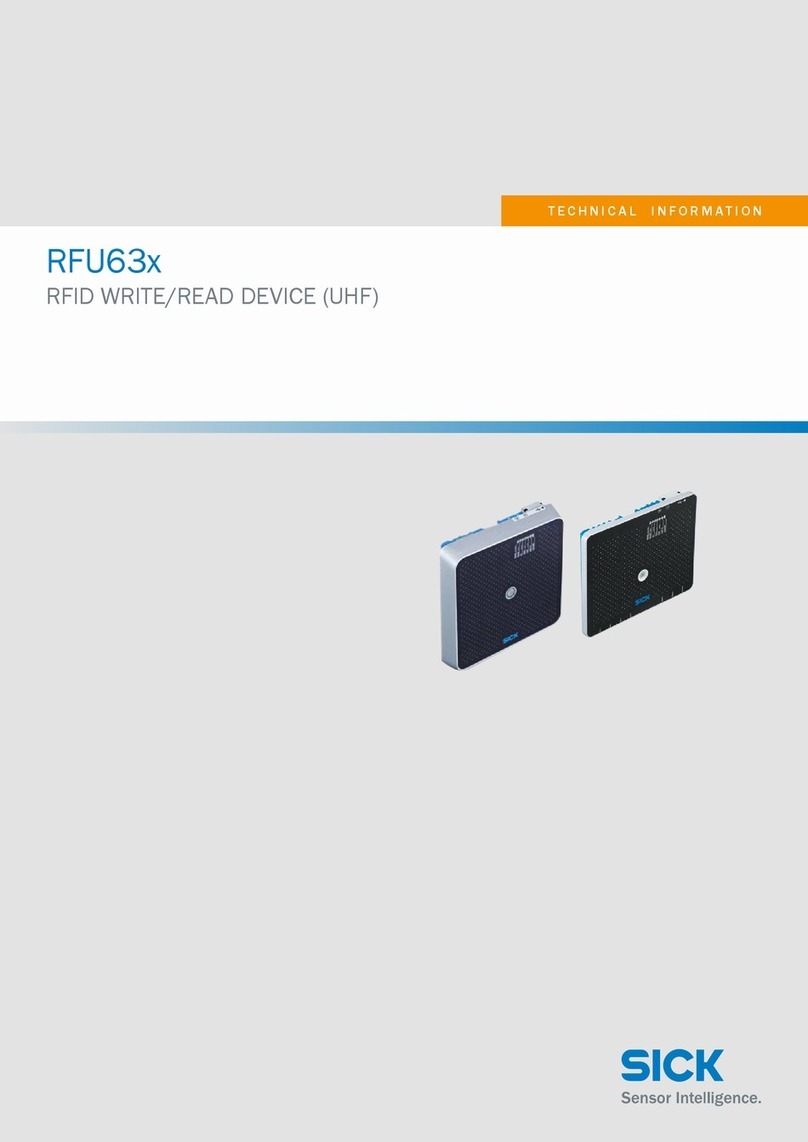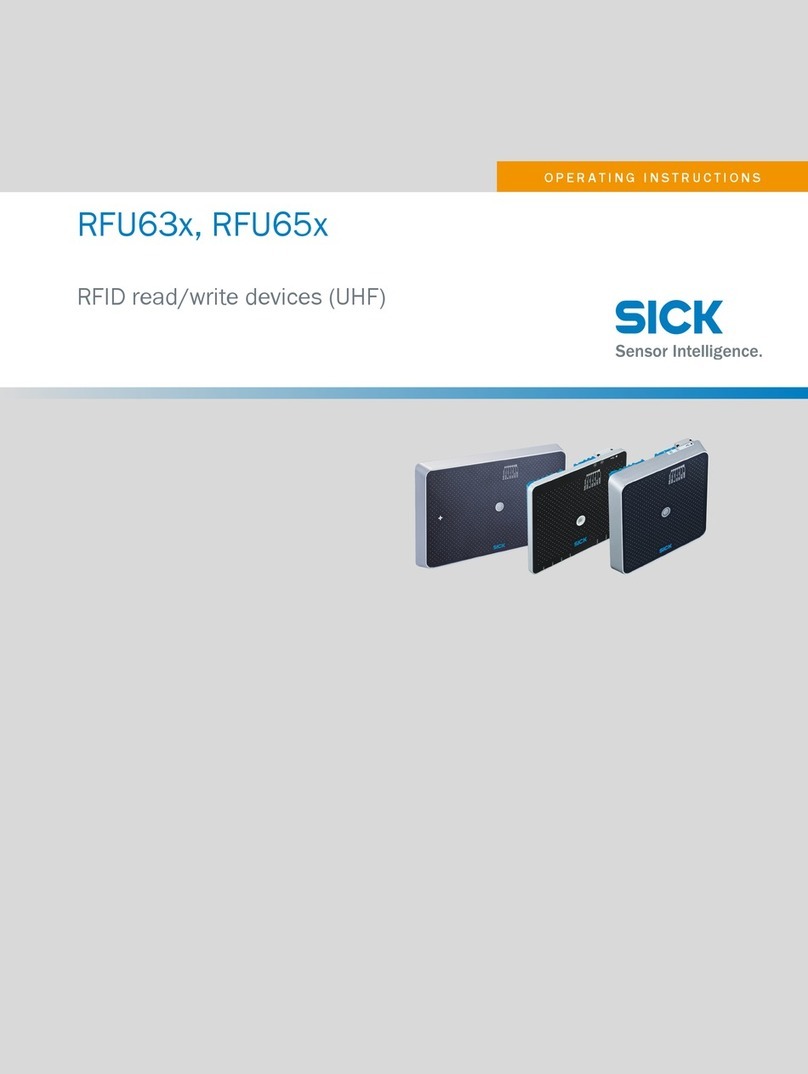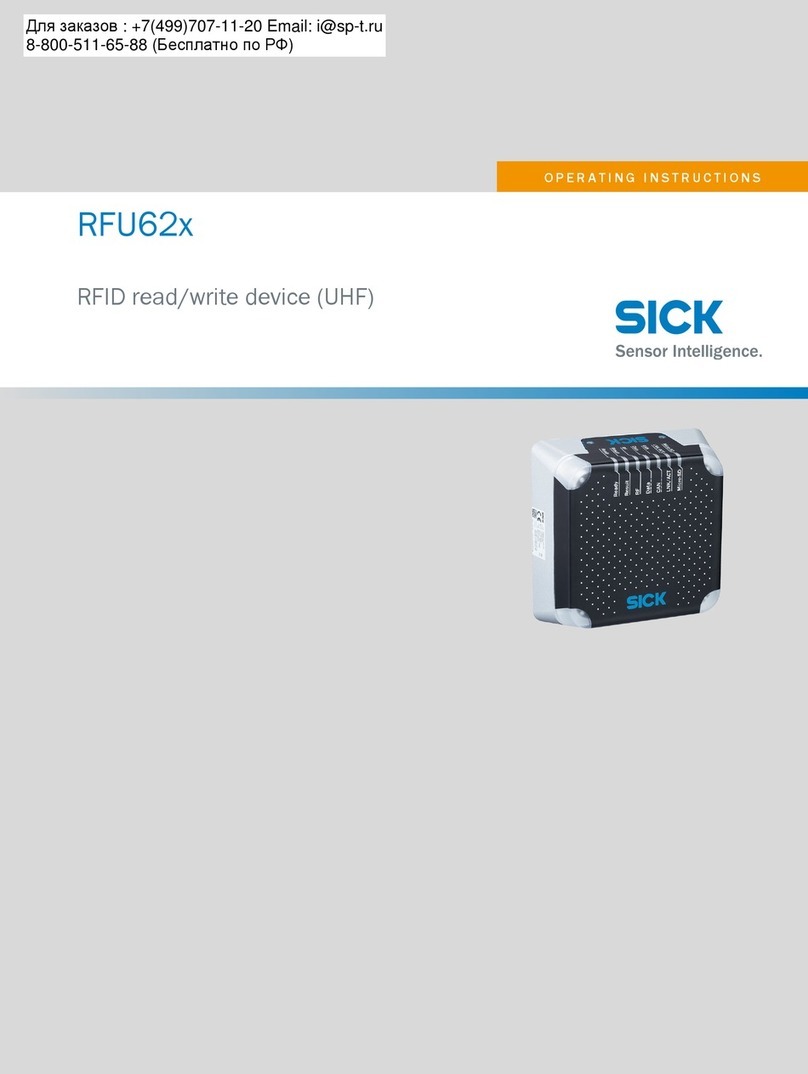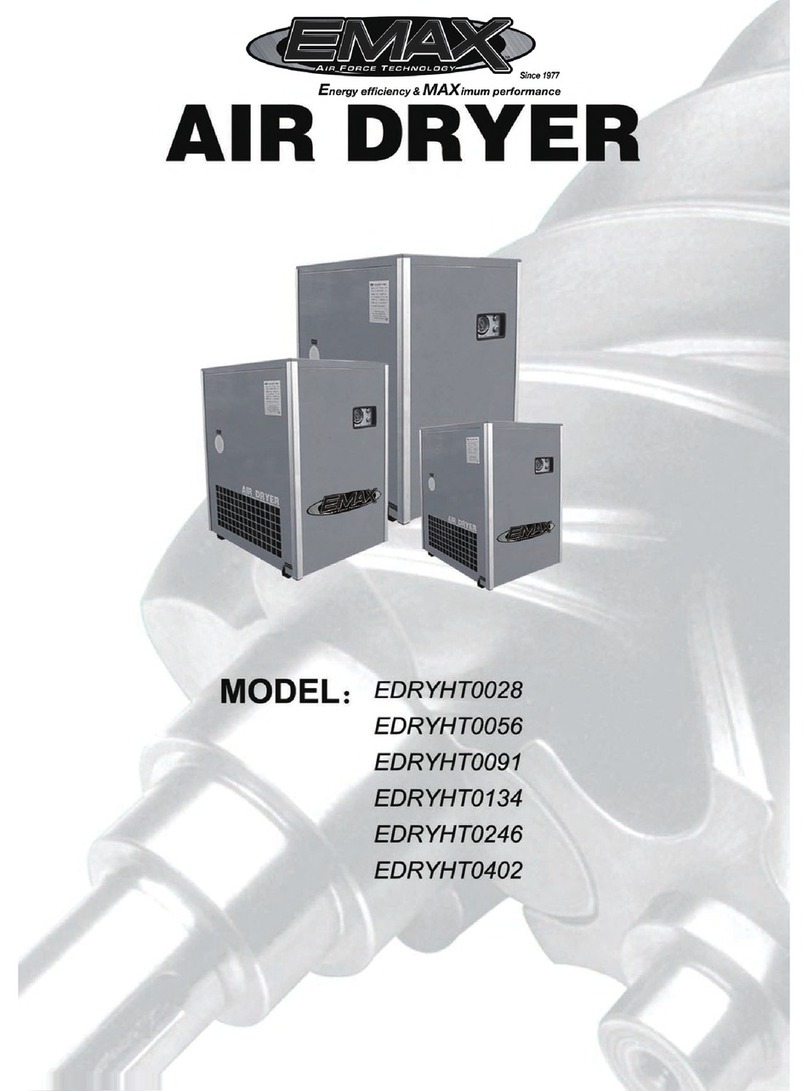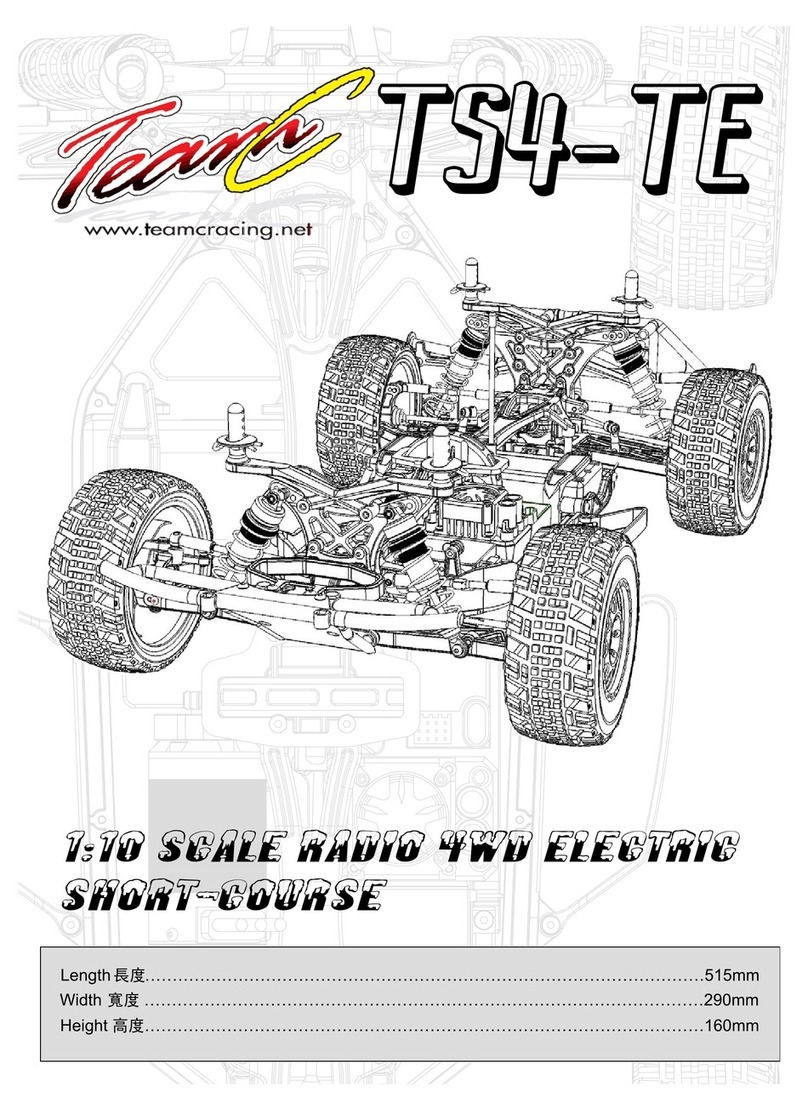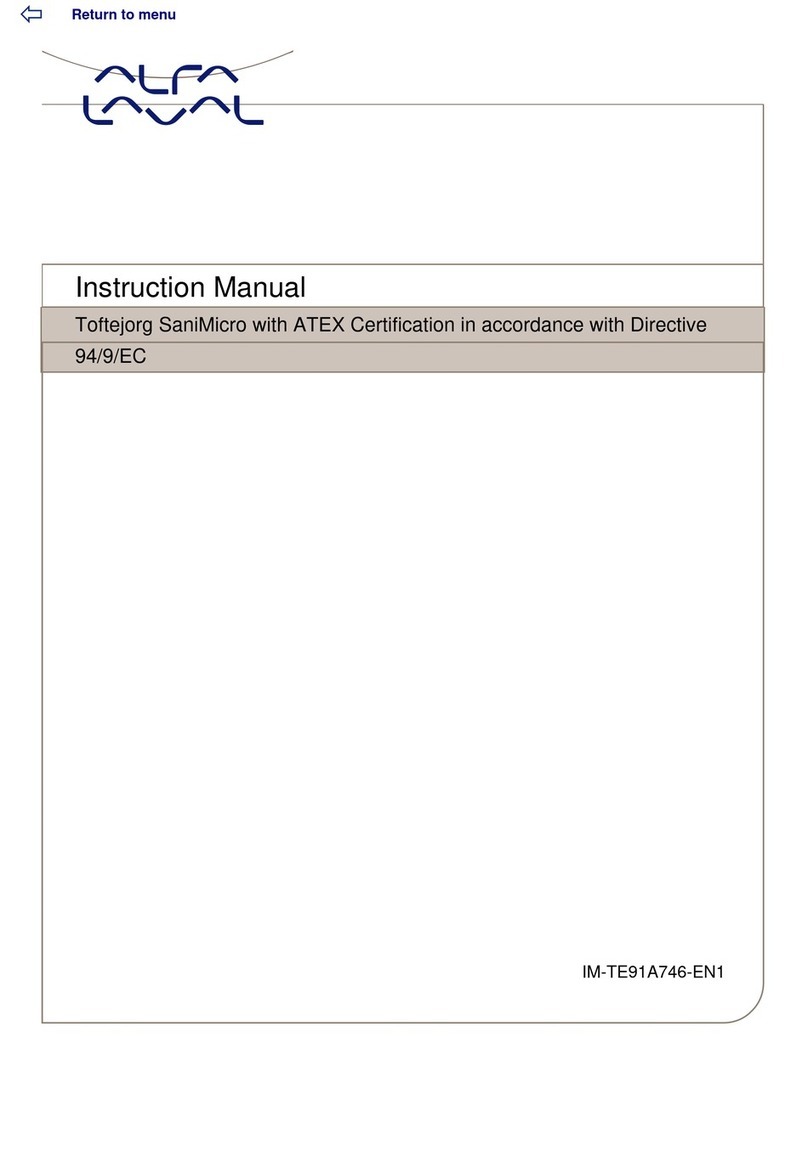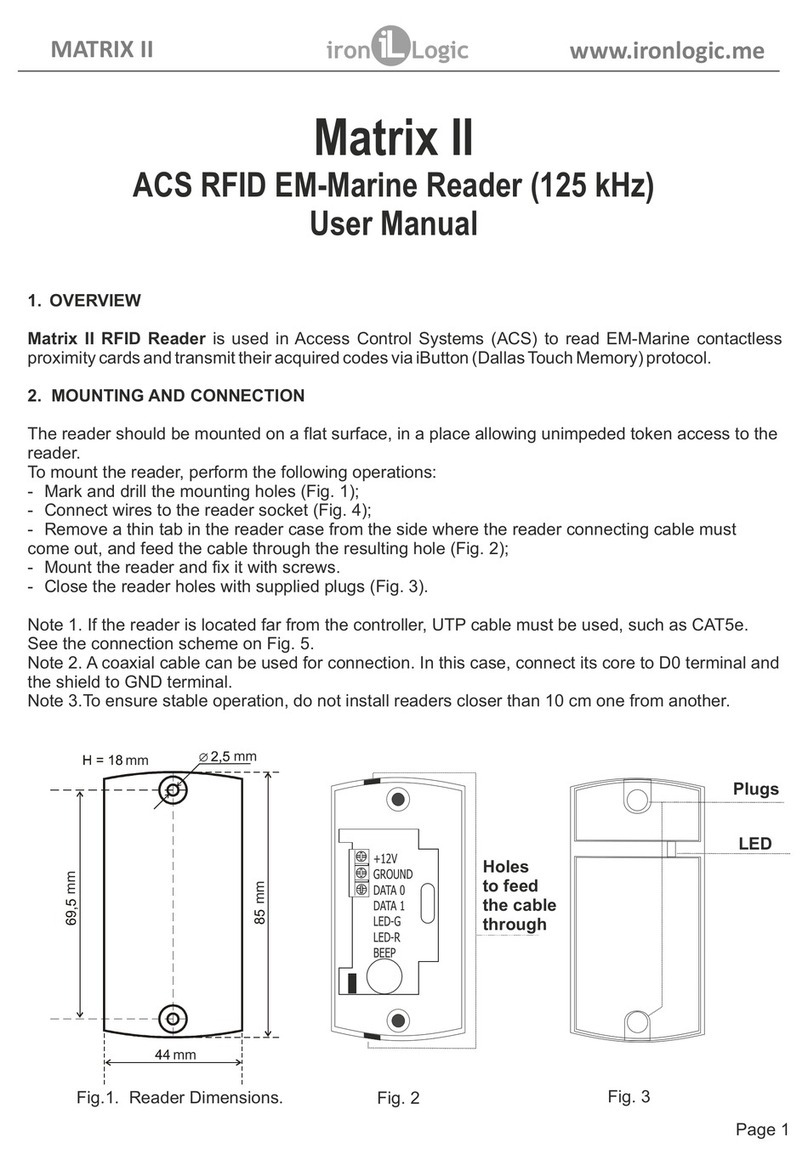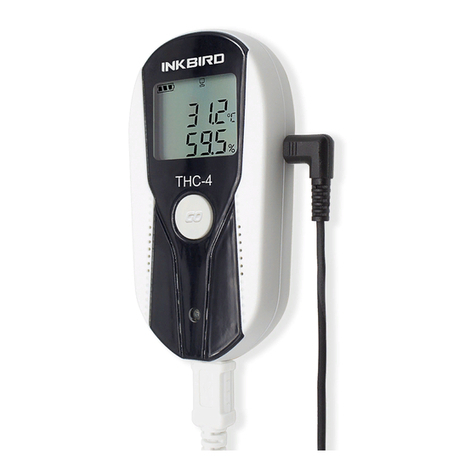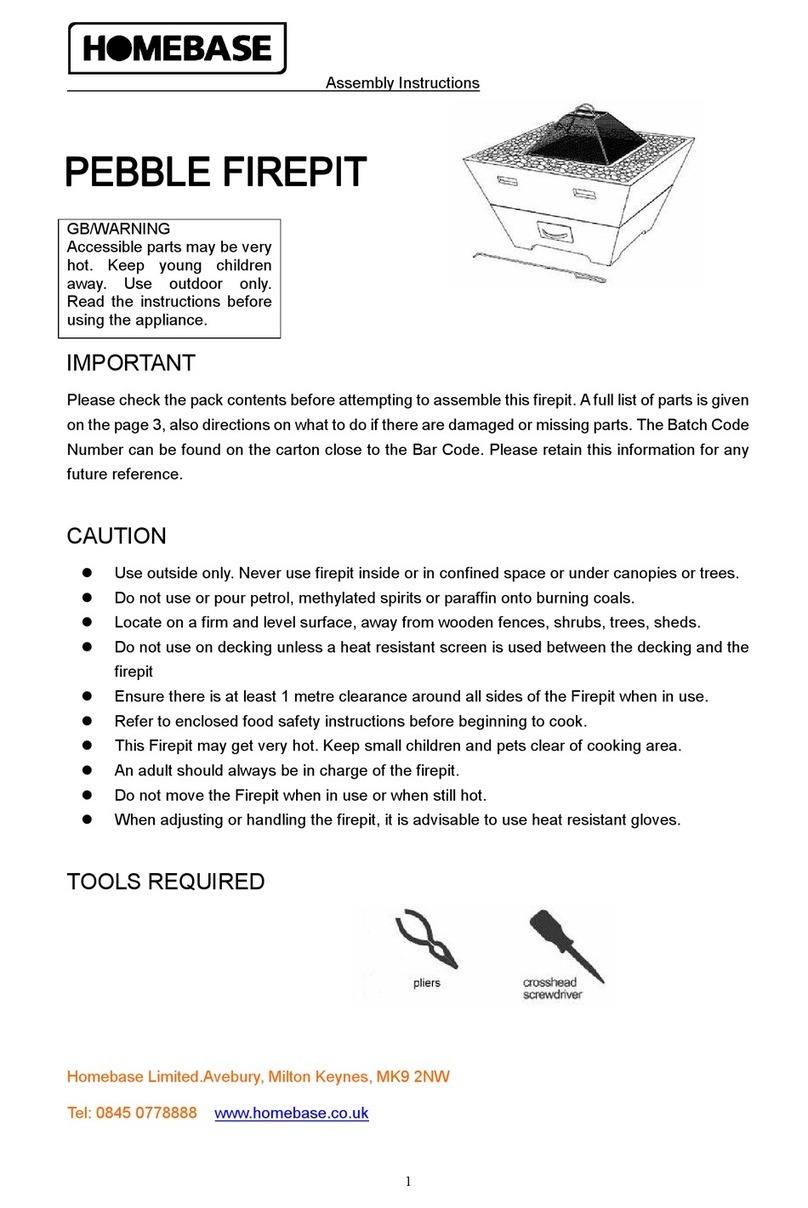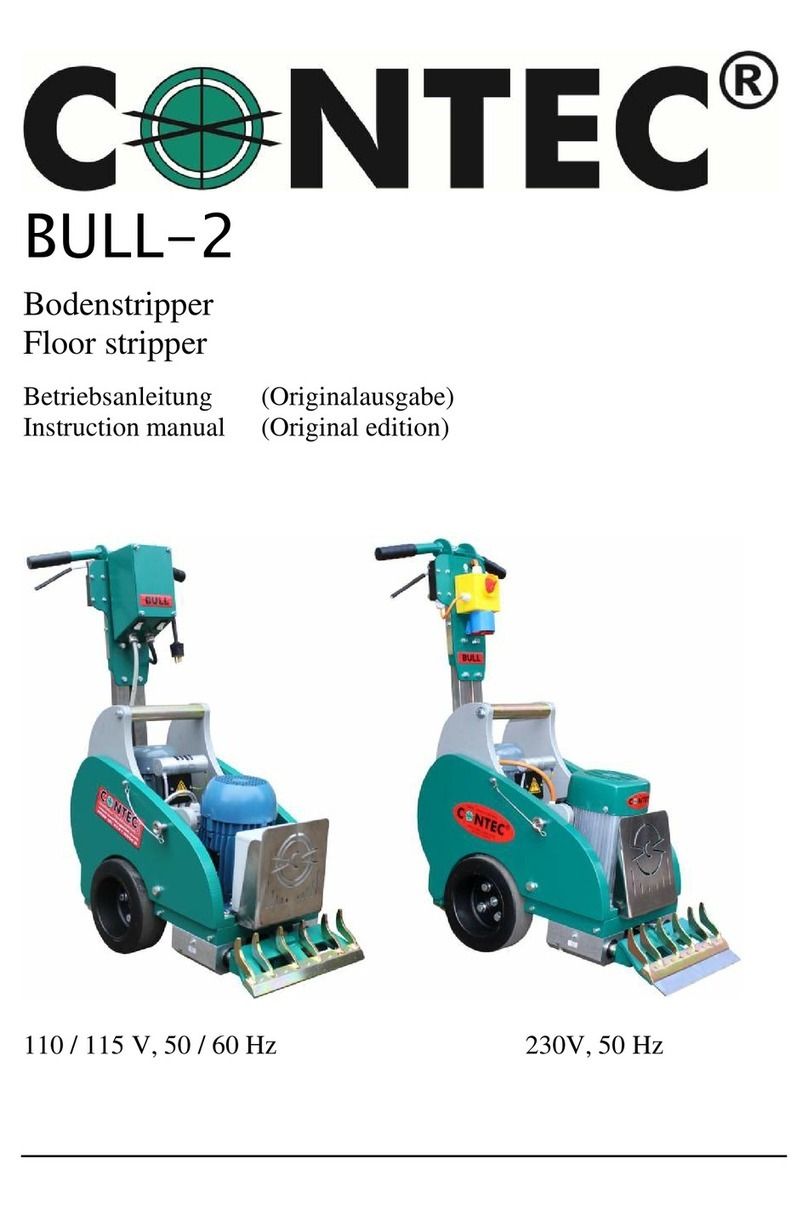SICK RFU630-13100 User manual

Quick‐
start
Q U I C K S T A R T e n
1 About this document
The purpose of this Quickstart is to allow you to commission the RFU63x RFID
read/write device (UHF) quickly and easily and to achieve initial read results with
transponders.
The Quickstart is valid for the regional variants listed in the “Device overview” sec‐
tion: see Device overview, page 6.
In this document, the RFU630-131xx read/write device is simply referred to as the
RFU630, unless a clear distinction needs to be made between variants for region
assignment (RFU630-131xx).
The Quickstart describes the commissioning process for an application with an
RFU630 in ambient temperature range 0 °C to +60 °C.
Device variant RFU630-13100 (Ethernet version, regional assignment: Europe/
Saudi Arabia/South Africa) is used as the basis for the examples given, based on
its default. The optional CDB650-204 connection module is used as an example
for the industrial-standard signal distribution of the RFU630. Other connection
modules are available.
All rights reserved. Subject to change without notice.
1.1 Supplementary and other relevant documents
More detailed information on mounting and electrically installing the device as a
stand-alone unit than provided in this Quickstart is available in the RFU63x/65x
RFID read/write device (UHF) operating instructions. This describes and presents:
•Measures and prerequisites for electrical installation of the RFU630 in an
ambient temperature range from 0 °C to –25 °C
•The suppression of ground potential equalization currents in applications
with widely distributed systems
•Electrical wiring plans for the CDB650-204 and CDM420-0006 connection
modules in relation to the RFU630
1.2 Operating the RFU630 in a fieldbus with line topology
The optional incorporation of the RFU630 in a PROFIBUS or PROFINET fieldbus is
described in the relevant operating instructions for the CDF600-21xx or -2200
fieldbus module, see Sources for obtaining more information, page 7.
Information about configuration can be found in the online help function of the
SOPAS ET configuration software.
The listed documents are available in PDF format on the SICK product pages on
the Internet: www.sick.com/RFU63x and www.sick.com/CDF600-2
2 Safety information
•This chapter is dedicated to the safety of commissioning personnel and the
operator of the system in which the device is integrated.
•Read this Quickstart carefully before commissioning the device in order to
familiarize yourself with the device and its functions. The Quickstart is con‐
sidered a part of the device and must be kept in an accessible location in
the immediate vicinity of the device at all times!
•For country-specific particulars to consider when operating the device, see
Operational restrictions, page 6.
•Ensure that the radiated power of the optional external antenna(s) used
does not exceed the optional permissible maximum value, see Technical
data (excerpt), page 5 and see Device overview, page 6.
WARNING
Health hazard as a result of high-frequency electromagnetic radiation!
The RFU630-13100 (region: Europe/Saudi Arabia/South Africa) is designed for
operation in accordance with ETSI EN 302208. During operation with the
internal antenna or additionally with the external RFA630-x00 antenna(s), the
human exposure regulations covered by EN 50364 must be observed.
bLimit human exposure to electromagnetic fields. Suitable safety dis‐
tances must be maintained during both short-term and long-term work
in the radiation range of the antenna(s).
Minimum distances to be maintained between the antenna and the
human body during continuous transmission: 30 cm with a maximum
radiated power of the antenna of 2 W ERP as per ETSI, 15 cm with
reduced radiated power of 1 W ERP, 10 cm with radiated power of
0.5 W ERP.
The RFU630-13101 (region: USA/Canada/Mexico) satisfies the limit values of
the FCC for exposure to radiation in an uncontrolled environment.
bDuring operation with the internal antenna or additionally with the exter‐
nal RFA630-x01 antenna(s), a safety distance of at least 30 cm must be
maintained between the antenna and the human body.
•To comply with the IP67 enclosure rating in operation, the following require‐
ments must be met. If this is not done, the device does not fulfill any speci‐
fied IP enclosure rating.
°The side cover of the USB female connector and the microSD card slot
must be screwed tight to the device. Recommended tightening torque
for the cover screws: 40 Ncm ± 5 Ncm.
°The SICK cables plugged into the M12 and TNC connections must be
screwed tight.
°Any electrical connections that are not being used must be fitted with
protective caps or plugs that are screwed tight (as in the delivery condi‐
tion).
°Any electrical connections for external antennas (TNC reverse) that are
not being used must be fitted with screw-on protective caps (as in the
delivery condition).
°Only operate the device without a cover for a short period while insert‐
ing or removing the memory card or temporarily using the USB inter‐
face. During this time, protect the device against moisture and dust.
•Opening the screws of the device housing will invalidate any warranty claims
against SICK AG. For further warranty provisions, see the General Terms and
Conditions of SICK AG, e.g., on the delivery note of the device.
NOTE
SICK uses standard IP technology in its products. The emphasis is
placed on availability of products and services.
SICK always assumes the following prerequisites:
•The customer ensures the integrity and confidentiality of the data
and rights affected by its own use of the aforementioned products.
•In all cases, the customer implements the appropriate security
measures, such as network separation, firewalls, virus protection,
and patch management.
2.1 Intended use
The RFU630-131xx read/write device is an intelligent SICK 4Dpro sensor from the
RFU63x product family. The device is used for the automated, fixed identification
of wireless-based data cards on moving or stationary objects and their manage‐
ment.
As a compact reading/writing unit, the RFU630-131xx has an internal antenna
and the option of connecting up to 3 additional external antennas. It processes all
standard passive transponders in accordance with ISO/IEC 18000-6C and
EPCglobal UHF C1G2 in the regional UHF carrier frequency range. Thanks to its
intelligent process logic it can be used either as a stand-alone solution or as part
of a group in a network. The RFU630-131 xx sends the read results to a higher-
level computer for further processing via its host interface. Or it receives com‐
mands for data card management (write, read, etc.) via this interface.
Intended use also includes compliance with all information in this Quickstart and
the supplementary RFU63x/65x RFID read/write device (UHF) operating instruc‐
tions.
3 Mounting
3.1 Scope of delivery
•RFU630 in the version ordered (regional assignment). Electrical connections
fitted with protective caps or plugs. Without connecting cables and brackets.
•Regional printed Quickstarts: see Device overview, page 6.
Other language versions may be available in PDF format on the RFU630
product page on the Internet at: www.sick.com/RFU63x
3.2 Equipment required
•4 x M6 screws or 3 x M5 screws for mounting the device on a mounting
device (bracket) provided by the customer. Screw length is dependent on the
mounting base (wall thickness of the bracket).
•When using an optional SICK bracket, the screws for mounting the device on
the bracket are included in the scope of delivery of the bracket.
3.3 Mounting requirements
•The permissible ambient conditions for operating the RFU630 must be
observed, e.g., assigned region, ambient temperature, ground potential: see
Technical data (excerpt), page 5 and see Electrical installation,
page 2.
•The device must be mounted using all 4 M6 or 3 M5 blind tapped holes pro‐
vided: see Device layout, page 4.
•Stable mounting equipment with sufficient load-bearing capacity and appro‐
priate dimensions for the RFU630: see Device layout, page 4. Weight of
the RFU630 (without cables): see Technical data (excerpt), page 5.
•No electrically conductive material between transponder and RFU630.
3.4 Mounting the RFU630
1. Select a suitable mounting location for the RFU630. The mounting location
and position depend on the antenna fields of the RFU630 and/or the exter‐
nal antennas and the transponders used.
2. Optional: Attach the separately ordered SICK mounting accessories to the
RFU630.
Otherwise, mount the RFU630 on the bracket provided by the customer
using the enclosed 4 or 3 screws. Screw the M6 screws max. 11 mm,
M5 max. 8 mm into the blind tapped holes. see Device layout, page 4.
3. Align the surface of the integrated antenna of the RFU630 (front face) and,
where applicable, the additional external antennas, to the data card on the
object. While doing so, take into account the shape, alignment, and dimen‐
sions of the antenna fields. Avoid as far as possible any large metal surfaces
positioned to the front. If this is not possible, do not mount the antenna(s)
plane parallel with the surface.
8016526/12XH/2019-03-12/en RFU630-131xx | SICK 1
8016526/12XH/2019-03-12
www.sick.com
RFU630-131xx
SICK AG
E
rwin-Sick
-Straße 1
D-79183 Waldkirch

4. Ensure that there are none of the following possible interference factors
between the RFU630 and the transponder during the write or read process:
°Electrically conductive material (e.g. liquids)
°persons
This also applies for any external antennas used.
The interference factors will absorb or reflect the generated UHF field and
thereby reduce the sensing range.
10°
1
Figure 1: Selection of the approach angle with a large metal surface on the front.
e.g. 10°
1Metal surface
Sensing range of the reading and writing field
0° 15°
30°
45°
60°
75°
90°
105°
120°
135°
150°
165°
180°
–165°
–150°
–135°
–120°
–105°
–90°
–75°
–60°
–45°
–30°
–15°
–33
–30
–27
–24
–21
–18
–15
–12
–9
–6
–3
0
3
6
9
2
1
Figure 2: Radiation pattern of the internal antenna of the RFU630-131xx (typical):
Measured antenna gain in dBic at 866.5 MHz, RHCP (right-hand circularly polar‐
ized)
1Horizontal plane (azimuth)
2Vertical plane (elevation)
The UHF field of the antenna(s) is influenced by its environment, making it impos‐
sible to provide a “clear” demarcation of the sensing range. Application-specific
reflections can result in both overreaches and “holes”. In addition to the read
results, the RFU630 can also output diagnostic data that provide an indication of
the write and read quality. This data can be used to achieve optimum read results
when setting up the system.
The quality of the transponder and the material of the object (plastic, wood,
metal, etc.) also determine the sensing range. The quality of the transponder is
determined by the antenna gain, the integrated transponder chip and the related
sensitivity, and the reflected energy.
The radiation pattern shown here for the internal antenna of the RFU630 was
obtained in a reproducible environment (absorber chamber) for illustrative pur‐
poses. The diagram may therefore only have limited applicability to your specific
application.
3.5 Mounting the CDB650-204 connection module
bMount the CDB650-204 connection module in the vicinity of the device.
When using the serial data interfaces (RS-232), the recommended length of
cable between the devices is max. 5 m.
Mount the CDB650-204 in such a way that the device can be accessed at all
times, see the CDB650-204 connection module operating instructions.
4 Electrical installation
•The electrical installation must only be performed by electrically qualified persons.
•Standard safety requirements must be met when working on electrical systems.
•Electrical connections between the RFU630 and other devices may only be
made or separated when there is no power to the system. Otherwise, there is
a risk of damaging the devices.
•In the case of open end connecting or extension cables, make sure that bare
wire ends do not touch. This creates a risk of short-circuits if the supply volt‐
age is switched on. Wires must be appropriately insulated from each other.
•The wire cross-sections in the supply cable from the user’s power system
must be selected in accordance with the applicable national standards.
•All circuits connected to the device must be designed as SELV circuits.
Supply voltage
•Supply voltage DC 18 V to 30 V:
°When the device is connected to the optional SICK CDB650-204 or
CDM420-0006 connection module using a SICK cable.
°When the device is operated without a connection module using a SICK
cable. 2 A fuse protection at the start of the feeding supply circuit.
•Optional 12 V to 30 V DC supply voltage when the device is operated without
a connection module using SICK supply cable part no. 6048319
(2 x 0.25 mm2, 10 m). 2.5 A fuse protection.
•The voltage supply via a power supply unit must be capable of buffering a
brief power failure of 20 ms.
•The voltage supply or power supply unit must satisfy SELV requirements in
accordance with the currently applicable EN 60950-1. (SELV = Safety Extra
Low Voltage).
Required input voltage on connection module
Voltage drops in the supply circuit affect the connection cable from the connec‐
tion module (CDB650-204 or CDM420-0006) to the device (decrease dependent
on the length) as well as – to a certain extent – the connection module itself. In
order to compensate for this loss when operating the device at the lower end of
the supply range (18 V DC), the following, higher input voltage must be applied to
the connection module:
Cable-dependent input voltages
Cable part no. 6052286 6051194 6051195
Length of cable 2 m 3 m 5 m
CDB650-204 input voltage 19.0 V 19.5 V 20.3 V
Device input voltage 18.0 V 18.0 V 18.0 V
Cable voltage drop 1.0 V 1.5 V 2.3 V
1) Wire cross-section for supply voltage: 0.14 mm2, AWG 25/26
WARNING
Risk of injury and damage caused by electrical current!
As a result of equipotential bonding currents between the device and other
grounded devices in the system, faulty grounding of the device can give rise
to the following dangers and faults:
•Dangerous voltages are applied to the metal housings.
•Devices will behave incorrectly or be destroyed.
•Cable shielding will be damaged by overheating and cause cable fires.
Remedial measures
•Only skilled electricians should be permitted to carry out work on the
electrical system.
•If the cable insulation is damaged, disconnect the voltage supply imme‐
diately and have the damage repaired.
•Ensure that the ground potential is the same at all grounding points.
•Where local conditions do not meet the requirements for a safe earthing
method, take appropriate measures (e.g., ensuring low-impedance and
current-carrying equipotential bonding).
For measures for eliminating hazards, see the “Electrical installation” chapter in
the RFU63x/65x RFID read/write device (UHF) operating instructions in the Inter‐
net at: www.sick.com/RFU63x.
NOTICE
Risk of damage to the device due to possible short-circuit!
The supply voltage input for the device is designed with internal circuit protec‐
tion to provide reverse polarity protection. The internal functional earth, which
also corresponds to the negative pole of the supply voltage for the device, is
connected directly to the metal housing of the device due to reasons relating
to high frequency.
If the supply voltage is polarity-reversed, this will not cause any damage pro‐
vided that the following conditions are met for the device:
The device is not connected in an electrically conductive manner, either via
other cables or via its housing, to other peripheral devices which use the
same reference potential.
NOTE
The USB interface of the device is used in industrial environments only as a
service interface for temporary use (e.g. for configuration, troubleshooting).
Permanent use in real operation of the system as a host interface is not
intended.
Connecting the device
1. Connect the communication interface (e.g., Ethernet) of the device directly to
the PC.
Commissioning: Electrical connection block diagram of the RFU630-131 xx
with optional connection module: A
2. If external antennas (max. 3, e.g. RFA630-000 for Europe, India, Russia,
South Africa, Saudi Arabia, part no. 1058383) are used, connect them to
the antenna connections of the device using appropriate connecting cables
(e.g. part no. 6049780, 2 m).
3. Connect the male connector of the “Power/Serial Data/CAN/I/0” connection
via a suitable cable (e.g. part no. 6052286, 2 m) to the female connector of
the CDB650-204.
4. If necessary, connect a read cycle trigger sensor, such as a photoelectric
retro-reflective sensor, to the “Sens/IN 1” switching input of the
CDB650-204.
8016526/12XH/2019-03-12/en RFU630-131xx | SICK 2

5. Depending on the length of the connecting cable, supply the device with
DC voltage between 18 V and 30 V.
✓After successful initialization, the “Device Ready” LED lights up green.
6. Turn on the PC and start Windows.
Block diagram of all interfaces of the RFU63x-131xx together with the optional
connection module: B
Power/Serial data/CAN/I/O connection
3
1
7
2
6
5
4
8
13
14
17
15 9
10
12
16
11
Figure 3: Male connector, M12, 17-pin, A-coding
Pin assignment of the “Power/Serial data/CAN/I/O” connection (M12)
Pin Signal Function
1 GND Ground
2 VSSupply voltage
3 CAN L CAN bus (IN/OUT)
4 CAN H CAN bus (IN/OUT)
5 TD+ (RS-422/485), Host Host interface (sender+)
6 TD– (RS-422/485), Host
TxD (RS-232), Host
Host interface (sender-)
7 TxD (RS-232), Aux Aux interface (sender)
8 RxD (RS-232), Aux Aux interface (receiver)
9 SensGND Digital input ground
10 Sensor 1 Digital input 1
11 RD+ (RS-422/485), Host Host interface (receiver+)
12 RD– (RS-422/485), Host
RxD (RS-232), Host
Host interface (receiver–)
13 Result 1 Digital output 1
14 Result 2 Digital output 2
15 Sensor 2 Digital input 2
16 N.c. –
17 N.c. –
– – Screen
M12 adapter cable on D-Sub, e.g. part no. 2055419 (2 m)
Adapter cable (female connector, M12, 17-pin, A-coded/male connector, D-Sub-HD, 15-pin)
6 1 105
11 15
Figure 4: Male connector, D-Sub-HD, 15-pin
Pin assignment of the “Power/Serial data/CAN/I/O” connection (D-Sub-HD)
Pin Signal Function
1 VSSupply voltage
2 RxD (RS-232), Aux Aux interface (receiver)
3 TxD (RS-232), Aux Aux interface (sender)
4 Sensor 2 Digital input 2
5 GND Ground
6 RD+ (RS-422/485), Host Host interface (receiver+)
7 RD– (RS-422/485), Host
RxD (RS-232), Host
Host interface (receiver–)
8 TD+ (RS-422/485), Host Host interface (sender+)
9 TD– (RS-422/485), Host
TxD (RS-232), Host
Host interface (sender-)
10 CAN H CAN bus (IN/OUT)
11 CAN L CAN bus (IN/OUT)
12 Result 1 Digital output 1
13 Result 2 Digital output 2
14 Sensor 1 Digital input 1
15 SensGND Digital input ground
Ethernet connection
1
43
2
Figure 5: M12 female connector, 4-pin, D-coded
Pin assignment of the “Ethernet” connection
Pin Signal Function
1 TD+ Sender+
2 RD+ Receiver+
3 TD– Sender–
4 RD– Receiver–
5 Commissioning and configuration with PC (Windows)
Adjustment of the device parameters to the application as well as diagnostics in
the event of malfunctions is undertaken by default with the SOPAS ET configura‐
tion software.
5.1 Installing and starting the configuration software
1. Download and install the latest version of the SOPAS ET configuration soft‐
ware as well as the current device description files (*.sdd): www.sick.com/
SOPAS_ET. In this case, select the “Complete” option as suggested by the
installation wizard. Administrator rights may be required on the PC to install
the software.
2. Start the “SOPAS ET” program option after completing the installation. Path:
Start > Programs > SICK > SOPAS ET Engineering Tool > SOPAS.
3. Establish communication between SOPAS ET and device with the automati‐
cally launching wizard. To do so, select the RFU630 under the devices avail‐
able depending on the connected communication interface, e.g. in the Ether‐
net (default Ethernet address: IP address: 192.168.0.1, subnet mask:
255.255.255.0). SOPAS ET establishes communication with the device and
loads the associated device description file. The Quickstart tab opens.
5.2 Detecting a transponder in Quickstart mode
1. Bring one or more standards-compliant UHF transponders into the working
range of the internal antenna of the device and/or into the working area of
the external antenna(s). The UII/EPC of the individual transponders must be
differentiated so that several transponders can be detected.
2. Click the Start button on the Quickstart tab of SOPAS ET. SOPAS ET generates
an automated read cycle and lists the detected transponders one after
another in the Quickstart window.
Figure 6: SOPAS ET display of the detected transponders in the Quickstart window
Feedback about transponder detection in the UHF field
In Quickstart mode, the default signal of the process feedback LED indicates
whether a UHF field is present and transponders have been detected. The
process feedback LED 8 is in the center of the device front plate, and in this
case, lights up blue.
Process feedback LED
PF LED Status Status
At half brightness
Lights up ON UHF field present
At full brightness
Flashing Flashing slowly (f = 1.25 Hz) 1 transponder in field
Flashing Flashing quickly (f = 2.5 Hz) 2 transponders in field
Flashing Flashing faster (f = 5 Hz) More than 2 transponders in
field
8016526/12XH/2019-03-12/en RFU630-131xx | SICK 3

NOTE
The automated triggering in Quickstart mode is intended for (initial) commis‐
sioning and not for permanent use when operating the device under real con‐
ditions.
5.3 Accessing the data on a transponder
1. In order to access the memory area of a transponder, click the Stop button in
Quickstart.
2. Highlight the desired transponder (click it with the mouse).
3. Click the Transponder Access button. The Transponder Management Access tab dis‐
plays the content of the selected transponder.
Figure 7: Transponder Access SOPAS ET display window
NOTE
The TID (tag identifier) of the transponder cannot be changed.
5.4 Continuing the configuration
1. Under SOPAS ET in the left-hand navigation tree, edit the required tabs for
the application using the additional entries under Parameters.These include
antenna configuration, performance optimization, data preprocessing,
transponder processing, object trigger control (e.g., via “Sensor 1” switching
input), data processing and output, data output interface(s), function of the
switching inputs and outputs, and the possible use of an optional microSD
memory card.
2. On the Antenna Configuration tab, the transmitting power for the internal and
any external antenna(s) can be set using sliders.
°Regional permissible values for the antennas, see Device overview,
page 6.
°RFU630 transmitting power default: 23 dBm (200 mW)
Figure 8: SOPAS ET: Example setting for the internal antenna
Figure 9: SOPAS ET: Example setting for external antenna 2
3. The line loss of the antenna connecting cable as well as the gain of the
external antenna used must also be entered here.
4. Test and, if necessary, modify the settings made when operating the system
under real conditions.
5.5 Completing the configuration
bPermanently save the entire configuration once it has been successfully
tested:
°Parameter set in the device: Click the button .
°Configuration file on the PC: Click the button .
6 Device description
6.1 Device layout
Dimensional drawing of the RFU630-131 xx, all dimensions in mm or inch: C
Dimensioning of the fastening threads, all dimensions in mm or inch: D
6.2 Status displays
Figure 10: Status indicators on the first display level
Status displays
Advertisement LED Color Status
Ready Lights up Green Device ready
Lights up Red Hardware error
Flashing Green Flashing cyclically 4 x red, 1 x green in PROFINET
operation (single port): Trying to establish a con‐
nection to a PLC (IO controller) or loss of connec‐
tion during operation
Flashing Red
Result Lights up Green Read or write successful
RF Lights up Green UHF field activated
Lights up Red External antenna(s) fault:
•All antennas deactivated.
•Antenna(s) in device activated but not con‐
nected, or cable is defective.
Data Lights up Green Data output via host interface
CAN Lights up Yellow Data traffic via CAN bus (CAN Rx)
LNK TX Lights up Green Data traffic via Ethernet
microSD Lights up Green microSD card inserted and ready for operation. In
this state, the device can either read data from
the card or write data to the card.
If the LED lights up, however, this does not indi‐
cate that the device is accessing the card!
Lights up Red microSD card inserted; however, it cannot be
read or is defective
Lights up Yellow A function is started via SOPAS ET which requires
a memory card. The microSD card is not ready for
operation, however (e.g. not plugged in, contacts
contaminated or without free storage space for
writing).
Additional indicators for ambient temperatures below –20 °C
Display LED Color Status
Ready Flashing Yellow Flashing, frequency 1 Hz.
The device is not ready for use.
Temperature of the device under –25 °C.
Flashing Green Flashing, frequency 1 Hz.
The device is not ready for use.
Temperature of the device between –25 °C and
–20 °C. After an approx. 2 min warm-up phase,
the device starts regular operation.
8016526/12XH/2019-03-12/en RFU630-131xx | SICK 4

Audible status indicator (beeper)
Default: 1 sound when at least one transponder is in the UHF field
6.3 microSD memory card (optional accessory)
Function
The device can execute the following functions on the plug-in memory card:
•Automated, additional storage of the internal parameter set to an external
storage medium (cloning function), if available. This is done in the framework
of the recommended safety concept for the 4Dpro device parameter sets.
The function is triggered by saving the internal parameter set with the “per‐
manent” option. The function is used, among other things, to conveniently
transmit the parameter set to an exchange unit of the same type in the event
of an error. Optional external media include a memory card which can be
plugged into the device or the CMC600 parameter storage module, which
can be used in the optional connection module, e.g., CDB650-204 or
CDM420-0006.
•Continuous recording of diagnostic read data after the first manual start,
e.g., via SOPAS ET. Recording is resumed after a device restart when the
function is set permanently.
The first time a parameter set is stored, we recommend that an empty memory
card is used (if necessary, check and delete the contents of the card on the PC
using a card reader).
The memory card is not included with delivery.
Only use types approved by SICK to ensure reliable function of the memory card,
see www.sick.com/RFU63x. The memory card has no write protection that can be
activated.
Inserting the memory card
NOTICE
To avoid damaging the memory card, make sure there is no power to the
device when you insert or remove it.
The card slot can be accessed on the device behind the aluminum cover, see
Device description, page 4.
Maintaining enclosure rating IP67: see Safety information, page 1.
1. Switch off the supply voltage to the device.
2. To remove the cover, unscrew both Allen screws (A/F 2).
3. Making sure it is in the correct position (with the contacts pointing to the
front and down – see the symbol on the device), insert the memory card into
the card slot until it locks into place.
4. Screw the aluminum cover back on. Recommended tightening torque for the
cover screws: 40 Ncm ± 5 Ncm.
5. Switch the supply voltage for the device back on.
3 2
1
Figure 11: USB connection and slot for microSD memory card
1Slot for microSD memory card
2USB port (female connector, Micro-B, 5-pin)
32 x screw, (Allen screw, A/F 2 mm)
6. Once it is switched on, the device automatically detects the presence of a
memory card and, depending on the card’s content, behaves as follows:
°If the card is empty or if it contains a parameter set that cannot be
interpreted by the device, the device saves its currently valid internal
parameter set to the card (provided there is sufficient storage space)
and starts with the internal parameter set.
°If the card contains a parameter set that can be interpreted by the
device, the device overwrites the currently valid internal parameter set
with this external parameter set.
The goal is for the internal parameter set and the parameter set saved
externally to always be identical.
NOTICE
Possible data loss or irreparable damage to the memory card!
The “microSD” LED lights up green when a memory card which is ready for
operation is inserted into the device. In this state, the device can either read
data from the card or write data to the card. Access to the card itself is not
signaled by the device (compare electronic camera with memory card).
The “microSD” LED lights up yellow when, for example, a function which
requires a memory card has been started manually with SOPAS ET and the
card is not ready for operation (e.g., not inserted, contacts are contaminated,
or no free storage space).
bTo avoid damaging the memory card, make sure there is no power to the
device when you insert or remove it.
bIf parameter values are changed with the “permanent” option in the
device using the SOPAS ET configuration software while the memory
card is inserted or if functions are started which access the memory
card (e.g., logging of data), do not remove the memory card and do not
switch off the supply voltage.
bIn order to remove the memory card in a controlled manner while work‐
ing with SOPAS ET when the device is switched on, select the Remove SD
card function under Analysis/SD card and wait for confirmation from
SOPAS ET.
7 Maintenance and care
The device does not contain any components that require maintenance.
If they are contaminated (e.g., metal dust), clean the front plates of the exter‐
nal antennas carefully using a soft, damp cloth (with a mild cleaning agent)
in order to achieve the full read and write speed.
8 Transport and storage
Transport and store the device in the original packaging, with protective plugs and
caps completely screwed-on. Do not store outdoors. To ensure that any residual
moisture present can escape, do not store the device in airtight containers. Do
not expose to any aggressive substances.
Storage conditions: Dry, dust-free, no direct sunlight, as little vibration as possi‐
ble, storage temperature –30 °C to +70 °C, relative humidity max. 90% (non-con‐
densing).
9 Repairs
Repair work on the device may only be performed by qualified and authorized ser‐
vice personnel from SICK AG.
10 Disassembly and disposal
Any device which can no longer be used must be disposed of in an environmen‐
tally friendly manner in accordance with the applicable country-specific waste dis‐
posal regulations. As it is categorized as electronic waste, the device must never
be disposed of with household waste!
11 Technical data (excerpt)
Type RFU630-131xx
Regional assignment Depending on type: see Device overview, page 6
Firmware version
Carrier frequency
Transmitting power •1 internal antenna, adjustable: depending on type, see
Device overview, page 6
•3 external antennas: Each up to +30 dBm, adjustable
Internal antenna Circularly polarized, max. 9 dBic gain, axial ratio typically
< 2 dB, aperture angle 72°, front-to-back ratio typically
> 17 dB
External antennas Monostatic, impedance 50 Ohm, TNC reverse
Air interface protocol ISO/IEC 18000-6 C
EPCglobal UHF Class 1 Generation 2
Sensing range ≤10 m (depending on the transponder and ambient condi‐
tions)
Serial RS-232/422/485 Host 1 (0.3 kBd ... 115.2 kBd) for data output
Serial RS-232 Aux 1 (57.6 kBd) for servicing 1)
USB 2) Aux 3 (USB 2.0) for servicing 1)
CAN CAN (CANopen®), 20 kBit/s ... 1 MBit/s. Max. bus length
30 m
Ethernet 10/100 Mbit/s
•Host 2 (TCP/IP, Ethernet-IP, PROFINET (Single Port [for
Firmware V1.30]) for data output
•Aux 2 (TCP/IP, Ethernet-IP) for servicing 1)
•Services: DHCP, NTP, HTTP, mDNS, DNS-SD
PROFIBUS Host over external CDF600-21xx module
PROFINET (line topology) Host over external CDF600-2200 module
Digital switching inputs 2 x physical, 2 x additional external via optional CMC600 mod‐
ule in the CDB650-204 or CDM420-0006 connection module
Vin = max. 30 V, Iin = max. 5 mA
Opto-decoupled, reverse polarity protected, adjustable
debounce time
Digital switching outputs 2 physical, 2 additional external via optional CMC600 module
in the CDB650-204 or CDM420-0006 connection module
Vout = Vs – 1.5 V, Iout ≤ 100 mA (typical)
Short-circuit protected, temperature protected, not electrically
isolated from the supply voltage
Electrical connections •1 male connector, M12, 17-pin, A-coded
•1 female connector, M12, 4-pin, A-coded
•3 x female connector, TNC reverse, mono-static, imped‐
ance 50 Ω
•1 female connector, USB, 5-pin, Micro B type
Optical indicators •7 RGB LEDs (status indicators) on front top
•1 RGB LED (process feedback) in front center, function/
color can be adjusted via SOPAS ET
Parametric data backup Optional: via plug-in microSD card or externally over the
CMC600 module in the CDB650-204 or CDM420-0006 con‐
nection module
8016526/12XH/2019-03-12/en RFU630-131xx | SICK 5

Type RFU630-131xx
Supply voltage UV•All devices: SELV in accordance with currently applicable
EN 60950-1
•Only RFU630-13101:
SELV (EN 60950-1:2006-04) and LPS
(EN 60950-1:2006-04) or Class 2 (UL1310).
18 V ... 30 V DC when connected to CDB650-204 or
CDM420-0006 connection modules and when operated with‐
out a SICK connection module. Always when using a SICK
cable, see Electrical installation, page 2.
Power consumption At full transmitting power:
•Max. 26 W (with a typical loading of the 2 switching out‐
puts of 100 mA each and a 30 V DC supply voltage)
•Typically < 20 W (with no loading of switching outputs)
Housing/weight Aluminum/approx. 2.6 kg
Safety EN 60950-1: 2006-04/A11: 2009-03/A1: 2010-03/A12:
2011-02
Electrical protection class III (EN 61140: 2006-08)
Enclosure rating IP 67 (EN 60529: 1991-10/A2: 2000-02)
Radio equipment approval See model-specific online data sheet
EMC EN 301489-3
MTBF 14 years 3)
Vibration resistance
Shock resistance
EN 60068-2-6: 2008-02
EN 60068-2-27: 2009-05
Ambient temperature range Operation: –30 °C 4) ... +60 °C
Storage: –30 °C ... +70 °C
Relative humidity (0 % ... 90 %), non-condensing
Conformity CE, UL 4)
Clock NTP network time protocol, no internal clock
1) For example: configuration, diagnosis, transponder access or display of the read results.
2) Interface only for temporary use.
3) Continuous operation at an ambient operating temperature of +50 °C.
4) For Firmware Version V2.02
5) Only UL certified if the type label contains the UL logo.
For further technical specifications, see the online data sheet on the product page
on the Internet at: www.sick.com/RFU63x
Regulatory notes
Europe: Simplified EU declaration of conformity
SICK AG hereby declares that the RFU630-131xx radio equipment complies with
the 2014/53/EU directive. The complete text of the EU declaration of conformity
is available at the following web address: www.sick.com/RFU63x.
12 Device overview
RFU63x-131xx: Device overview
Regional
assign‐
ment
Firmwa
re from
version
Carrier fre‐
quency range
Transmitting
power of the
internal
antenna
Device
type
Part no. Supplied
Quickstart
(Part no.)
Europe/
Saudi Ara‐
bia/South
Africa
V1.11 865.7 MHz ...
867.5 MHz
Max. 2 W
(ERP 1))
RFU630-
13100
1054396 English
(8016526),
German
(8016525)
USA/
Canada/
Mexico/
Argentina
V1.11 902.75 MHz ...
927.25 MHz
Max. 4 W
(EIRP 2))
RFU630-
13101
1054397 English
(8016526),
French
(8019484),
Spanish
(8016527)
Australia V1.22 920.25 MHz ...
925.75 MHz
Max. 4 W
(EIRP 2))
RFU630-
13102
1058775 English
(8016526)
India V1.50 865.7 MHz ...
866.9 MHz
Max. 2 W
(ERP 1))
RFU630-
13103
1067473 English
(8016526)
Brazil V1.42 902.75 MHz ...
907.25 MHz
915.25 MHz ...
927.25 MHz
Max. 4 W
(EIRP 2))
RFU630-
13104
1068726 English
(8016526),
Portuguese
(8017409)
China/
Thailand
V1.22 920.625 MHz .
..
924.375 MHz
Max. 2 W
(ERP 1))
RFU630-
13105
1057943 English
(8016526),
Chinese
(8016528),
Thai
(8023440)
Japan V1.40 916.8 MHz ...
920.4 MHz
Max. 4 W
(EIRP 2))
RFU630-
13106
1067133 English
(8016526),
Japanese
(8016529)
Max. 0.5 W
(EIRP 2))
RFU630-
13107
1061498
Russia/
Belarus
V1.51 866.3 MHz ...
867.5 MHz
Max. 2 W
(ERP 1))
RFU630-
13108
1070903 English
(8016526),
Russian
(8017367)
Korea V1.60 917.3 MHz …
920.3 MHz
Max. 4 W
(EIRP 2))
RFU630-
13110
1073442 English
(8016526),
Korean
(8018510)
Regional
assign‐
ment
Firmwa
re from
version
Carrier fre‐
quency range
Transmitting
power of the
internal
antenna
Device
type
Part no. Supplied
Quickstart
(Part no.)
New
Zealand
V1.63 920.25 MHz ...
927.25 MHz
Max. 3.16 W
(EIRP 2))
RFU630-
13111
1077862 English
(8016526)
Indonesia V1.60 923.25 MHz …
924.75 MHz
Max. 2 W
(ERP 1))
RFU630-
13112
1074302 English
(8016526)
Taiwan V1.63 922.25 MHz ...
927.75 MHz
Indoor: Max.
2 W (EIRP 2))
Outdoor:
Max. 1 W
(EIRP 2))
RFU630-
13113
1077861 English
(8016526),
Taiwanese
(8019485)
Malaysia V2.02 919.25 MHz ...
922.75 MHz
Max. 2 W
(ERP 1))
RFU630-
13114
1095224 English
(8016526)
Morocco 2.0.0 R 867.7 MHz ...
867.9 MHz
Max. 0.5 W
(ERP 1))
RFU630-
13115
1083558 English
(8016526),
French
(8019484)
1) ERP = equivalent radiated power.
2) EIRP = equivalent isotropic radiated power.
12.1 Operational restrictions
NOTICE
Operational restrictions!
When delivered, the frequency band of the RFU630-131xx is configured in
such a way that it can be operated in the following assigned regions (depend‐
ing on the model) without interfering with protected frequencies (such as
mobile communications):
•RFU630-13100 (Europe/Saudi Arabia/South Africa)
•RFU630-13101 (USA/Canada/Mexico/Argentina)
•RFU630-13102 (Australia)
•RFU630-13103 (India)
•RFU630-13104 (Brazil)
•RFU630-13105 (China/Thailand)
•RFU630-13106/-13107 (Japan)
•RFU630-13108 (Russia/Belarus)
•RFU630-13110 (Korea)
•RFU630-13111 (New Zealand)
•RFU630-13112 (Indonesia)
•RFU630-13113 (Taiwan)
•RFU630-13114 (Malaysia)
•RFU630-13115 (Morocco)
Operating the same RFU630-131xx in other regions can interfere with pro‐
tected frequencies.
bOnly use the RFU630-131xx in the region for which it has been
approved.
bWhen reselling the RFU630-131xx, inform the buyer of the regional
assignment.
France
The RFU630 must not be operated within a 20 km radius of 13 military zones.
Lithuania
There may be restrictions in Lithuania (extent not currently known).
Russia
Only licensed operation is possible in Russia.
USA
(1) This device complies with part 15 of the FCC Rules. Operation is subject to the
following two conditions:
(1) This device may not cause harmful interference, and (2) this device must
accept any interference received, including interference that may cause undesired
operation.
(2) Changes or modifications not expressly approved by the party responsible for
compliance could void the user’s authority to operate the equipment.
(3) Note: This equipment has been tested and found to comply with the limits for
a Class A digital device, pursuant to part 15 of the FCC Rules. These limits are
designed to provide reasonable protection against harmful interference when the
equipment is operated in a commercial environment. This equipment generates,
uses, and can radiate radio frequency energy and, if not installed and used in
accordance with the instruction manual, may cause harmful interference to radio
communications. Operation of this equipment in a residential area is likely to
cause harmful interference in which case the user will be required to correct the
interference at his own expense.
(4) To comply with FCC part 15 rules in the United States, the system must be pro‐
fessionally installed to ensure compliance with the Part 15 certification.
(5) It is the responsibility of the operator and profes-sional installer to ensure that
only certified systems are deployed in the United States. The use of the system in
any other combination (such as co-located antennas transmitting the same infor‐
mation) is expressly forbidden.
(6) This device complies with the limit values defined by the FCC for radio radia‐
tion in an uncontrolled environment. The device must have a minimum distance
of 30 cm between the source of radiation and your body.
Canada
(1) This Class A digital apparatus complies with Canadian ICES-003.
(2) This device satisfies the Industry Canada CNR applicable to license-free radio
equipment. Use is permitted providing the two following conditions are met: (1)
8016526/12XH/2019-03-12/en RFU630-131xx | SICK 6

The device must not cause any faults and (2) the user of the device must accept
any fault produced in the device, even if this may impair its function.
Mexico
(1) IFETEL note:
“Operation is subject to the following two conditions: (1) This device must not pro‐
duce any harmful faults and (2) this device must be able to withstand faults,
including faults that may cause unwanted operating behavior.”
Korea
(1) This equipment is Industrial (Class A) electromag-netic wave suitability equip‐
ment and seller or user should take notice of it, and this equipment is to be used
in the places except for home.
(2) That wireless equipment is likely to cause propa-gation interference, and so
can not be associated with lifesaving services.
Thailand
(1) This telecommunication equipment is in compliance with NBTC requirements.
(2) This radiocommunication equipment has the electromagnetic field strength in
compliance with the Safety Standard for the Use of Radiocommunication Equip‐
ment on Human Health announced by the National Telecommunications Commis‐
sion.
(3) In Thailand, only antennas whose maximum antenna gain does not exceed
6 dBi are permitted for operation of the device with external antenna.
13 Sources for obtaining more information
Additional information about the device, its optional accessories, and fieldbus
modules can be found in electronic format on the following product pages on the
Internet at:
13.1 RFU630 read/write device
www.sick.com/RFU63x
•Summary of type-specific technical data (online data sheet)
•EU declaration of conformity
•Dimensional drawing and 3D CAD dimension models in various electronic
formats
•Compatible accessories (including transponders, cables, brackets, trigger
sensors)
•RFU630 RFID read/write device (UHF) Quickstart in English (no. 8016526),
German (no. 8016525), and in other languages
•RFU630 (UHF) RFID read/write device operating instructions
•Ordering information in the RFID product information in English
(no. 8016267) and German (no. 8016266)
•Publications dealing with accessories
13.2 Function blocks
www.sick.com/RFU63x
•Function blocks for communication between a SIMATIC controller (S7-300/
S7-400) and the device.
•Function blocks for other controllers on request.
13.3 CDF600-21xx PROFIBUS fieldbus module
www.sick.com/CDF600-2
•CDF600-21 xx PROFIBUS fieldbus module operating instructions in English
(no. 8015335) and German (no. 8015334), in other languages if required
13.4 CDF600-22xx PROFINET fieldbus module
www.sick.com/CDF600-2
•CDF600-2200 PROFINET fieldbus module operating instructions (M12 vari‐
ant) in English (no. 8015922) and German (no. 8015921) as well as in other
languages, if applicable
13.5 Documents on request
•Overview of command strings of the device
Support is also available from your sales partner: www.sick.com
13.6 Copyright notices
Open source programs
SICK uses open-source software in the device. This software is licensed by the
rights holders using the following licenses among others: the free licenses GNU
General Public License (GPL Version2, GPL Version3) and GNU Lesser General
Public License (LGPL), the MIT license, zLib license, and the licenses derived from
the BSD license.
This program is provided for general use, but WITHOUT ANY WARRANTY OF ANY
KIND. This warranty disclaimer also extends to the implicit assurance of mar‐
ketability or suitability of the program for a particular purpose.
More details can be found in the GNU General Public License.
View the complete license texts here: www.sick.com/licensetexts
Printed copies of the license texts are also available on request.
A
Cable 7
Cable 8
Cable 6
Configuration
Diagnostics
Transponder
access
Reading result
SOPAS ETSOPAS ET
"Power/Serial Data/CAN/I/O"
(Aux 1, Host 1)
...
...
12
VS
GND
PC
"Ethernet" (Aux 2)
External antennas 4
...
1 3
EthernetEthernet
RFU63x-
131xx
5
11 10 12
Trigger
sensor
SGND
Sens 1
VS
1
Out
GND
VS
2
3
Connection
module
1Trigger sensor (read cycle)
2Supply voltage VS
3Connection module CDB650-204 or CDM420-0006
4External antennas, e.g., RFA630-000 for the regions Europe, India, Russia, South Africa, Saudi Arabia
5Configuration, diagnosis, transponder access or display of read results
6Adapter cable (male connector, M12, 4-pin, D-coded / male connector, RJ-45, 8-pin)
7For CDB650-204: Connection cable 1:1 (female connector, M12, 17-pin, A-coded / male connector, M12, 17-pin, A-coded)
For CDM420-0006: Adapter cable (female connector, M12, 17-pin, A-coded / male connector, D-Sub-HD, 15-pin)
8Cable (e.g. male connector, TNC reverse / male connector, TNC reverse for RFA630-000)
8016526/12XH/2019-03-12/en RFU630-131xx | SICK 7

B
Configuration
Diagnostics
Transponder
access
Reading result
"Ethernet“ "Ethernet“
(Host 2)
Input 2 3
Input 1 4
Output 1 2
Output 2 1
RFU63x-
131xx
Cable
Cable æ
"Serial RS-232/RS-422/485" (Host 1) ä
Cable å
"Power/Serial Data/CAN/I/O"
(Aux 1, Host 1)
...
...
12
VS
GND
HOST
Further data
processing
VS
External antennas 7
...
1 3
â
Reading result ã
5
6
SOPAS ETSOPAS ET
Cable 8
"Serial RS-232" (Aux 1) 9
USBUSB
Cable àPC
á
EthernetEthernet
"Ethernet“
(Aux 2)
Connection
module
"USB" (Aux 3),
for temporary use only ß
SerialSerial
1Digital output 2, e.g. for connecting an LED
2Digital output 1, e.g. for connecting an LED
3Digital input 2, e.g., for connecting an incremental encoder
4Digital input 1, e.g., for connecting a read cycle trigger sensor
5Supply voltage VS
6CDB650-204 or CDM420-0006 connection module
7External antennas, e.g., RFA630-000 for the regions Europe, India, Russia, South Africa, Saudi Arabia
8Null modem cable (female connector, D-Sub, 9-pin / female connector, D-Sub, 9-pin), crossed TxD and RxD
9Alternative to USB or Ethernet Aux port
ßUSB, alternative to serial RS-232 or Ethernet Aux port. The USB interface must only be used temporarily as a servicing interface!
àAdapter cable (male connector, USB, Micro-B type / male connector, USB, type A)
áConfiguration, diagnosis, transponder access or display of read results
âFurther data processing
ãRead result
äAlternative to Ethernet host port
åAdapter cable (male connector, M12, 4-pin, D-coded / male connector, RJ-45, 8-pin)
æCable (e.g. male connector, TNC reverse / male connector, TNC reverse for RFA630-000)
çFor CDB650-204: Connection cable 1:1 (female connector, M12, 17-pin, A-coded / male connector, M12, 17-pin, A-coded)
For CDM420-0006: Adapter cable (female connector, M12, 17-pin, A-coded / male connector, D-Sub-HD, 15-pin)
8016526/12XH/2019-03-12/en RFU630-131xx | SICK 8

C
1 2 3
ß
4 5 6 8
8
9
238.6 (9.40)
64.3 (2.53)
238.6 (9.40)
7
13 x “external” antennae connection (female connector, TNC reverse)
2“Power/Serial Data/CAN/I/O” connection (male connector, M12, 17-pin, A-coded)
3“Ethernet” connection (female connector, M12, 4-pin, D-coded)
4Cover with integrated antenna
51 x LED, multi-colored (process feedback)
67 x LED, multi-colored (status indicator)
7Acoustic opening of the beeper, under a cover film
83 x M5 blind tapped hole, 8 mm deep, for mounting the device
94 x M6 blind tapped hole, 11 mm deep, for alternative mounting of the device
ß“USB” connection (female connector, 5-pin, type Micro-B) and slot for microSD memory card, behind screw-mounted cover
à2 x function buttons (Step ▾ and Enter p)
D
119.3 (4.7)
40 (1.58)
71.8 (2.83)
136.8 (5.39)
34.3 (1.35)
32.5 (1.28)
40 (1.58)
8016526/12XH/2019-03-12/en RFU630-131xx | SICK 9
This manual suits for next models
2
Table of contents
Other SICK Other manuals
Popular Other manuals by other brands

All Pond Solutions
All Pond Solutions CUV-207 manual
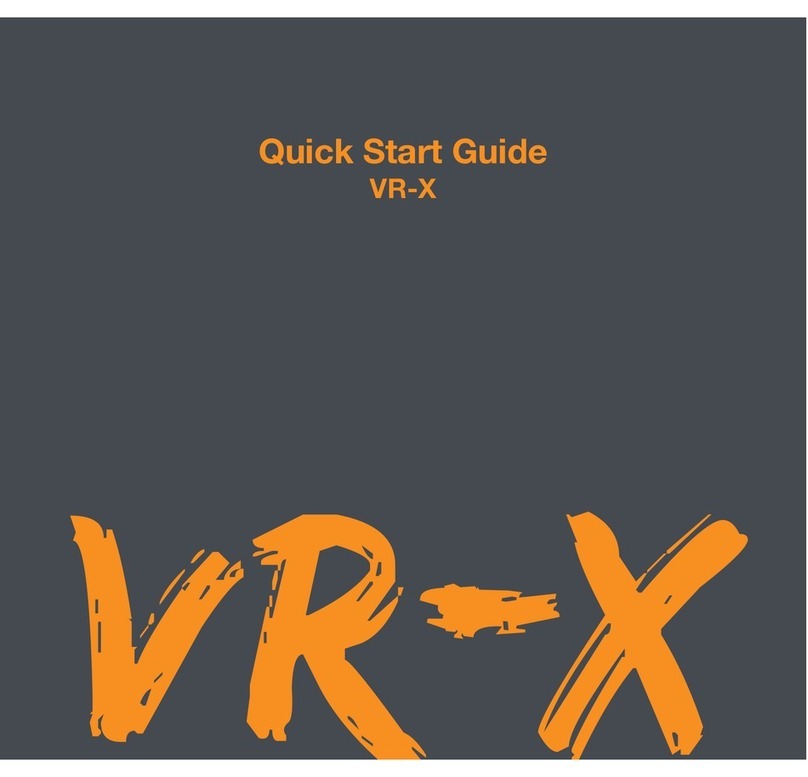
Kaiser Baas
Kaiser Baas VR-X quick start guide
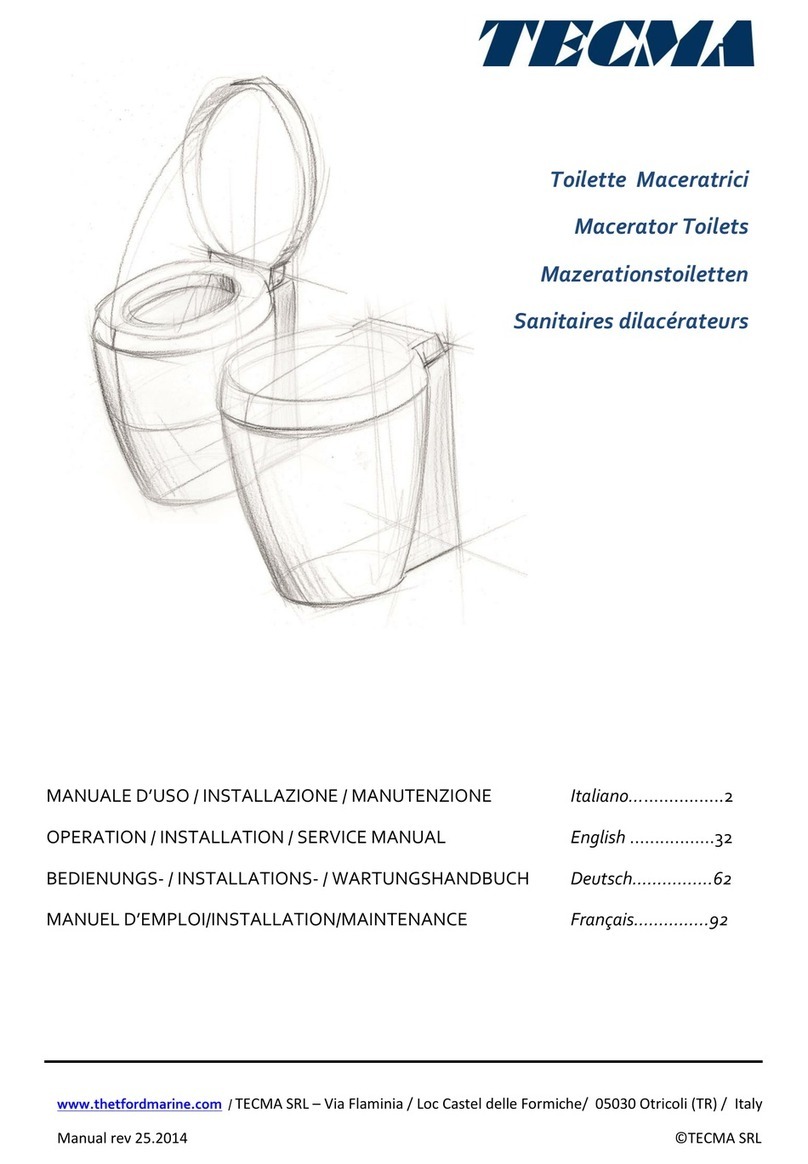
Tecma
Tecma X-light Operation and installation manual
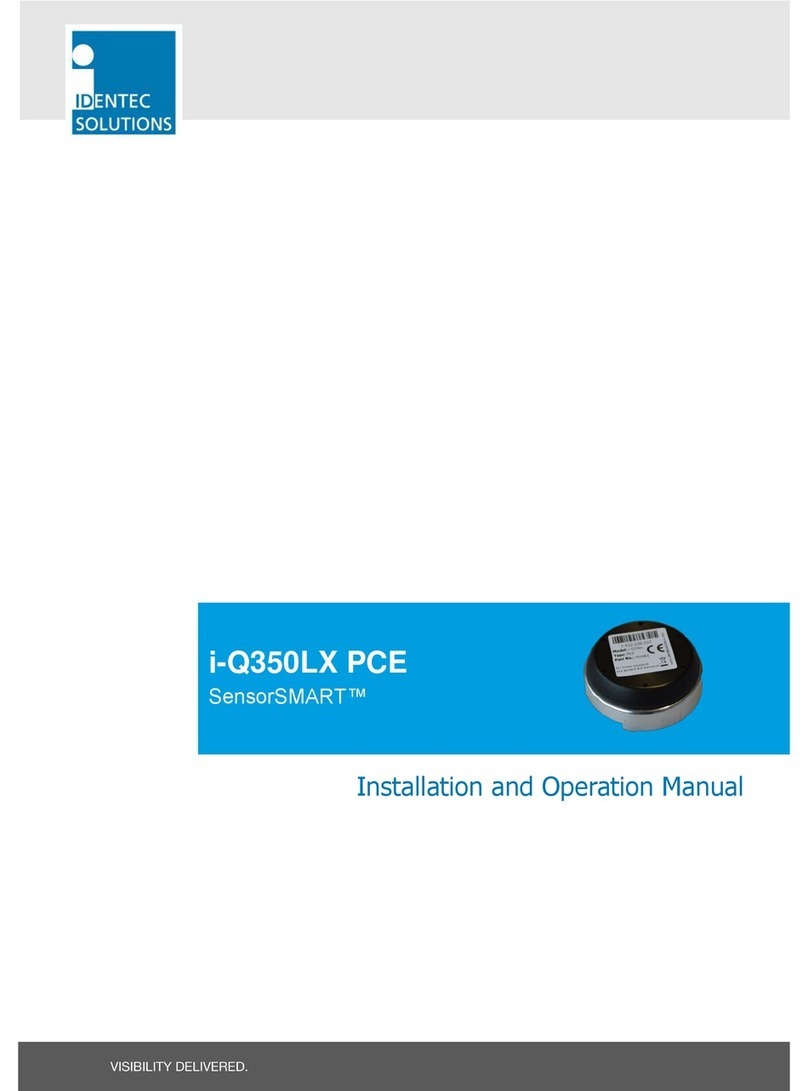
IDENTEC SOLUTIONS
IDENTEC SOLUTIONS SensorSMART i-Q350LX PCE Installation and operation manual

Siemens
Siemens 3AH Instructions, Installation, Operation, Maintenance
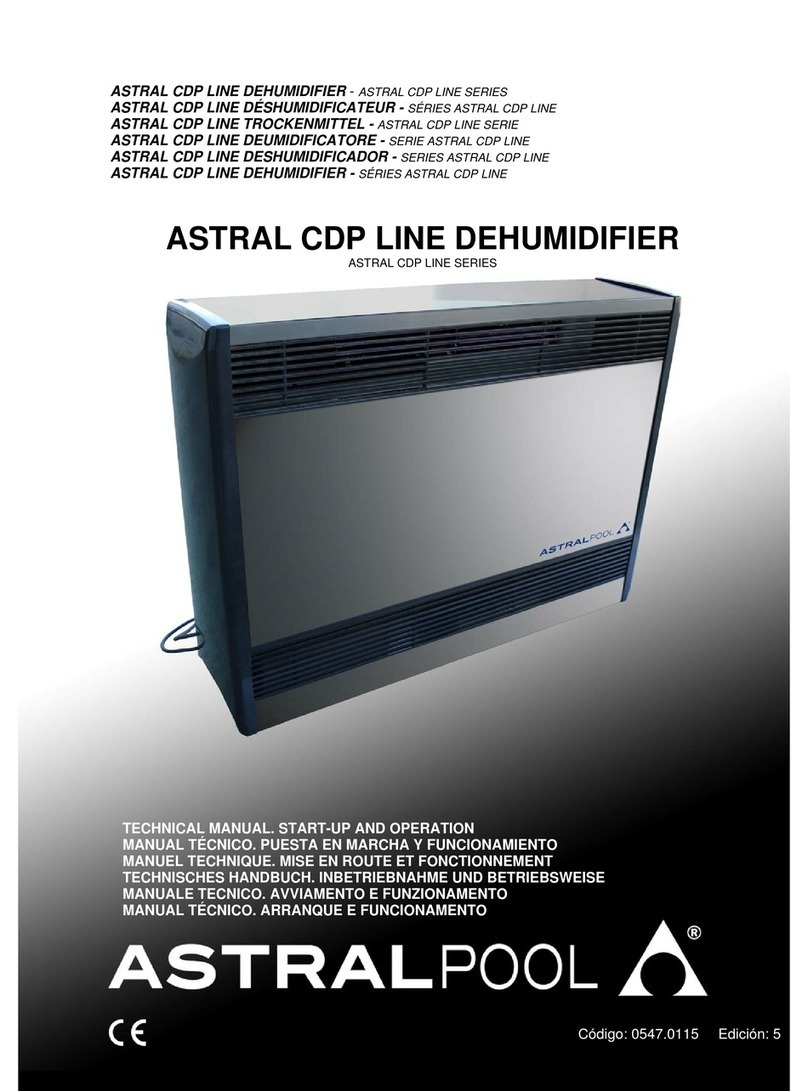
Astral Pool
Astral Pool ASTRAL CDP-2 TECHNICAL MANUAL. START-UP AND OPERATION
